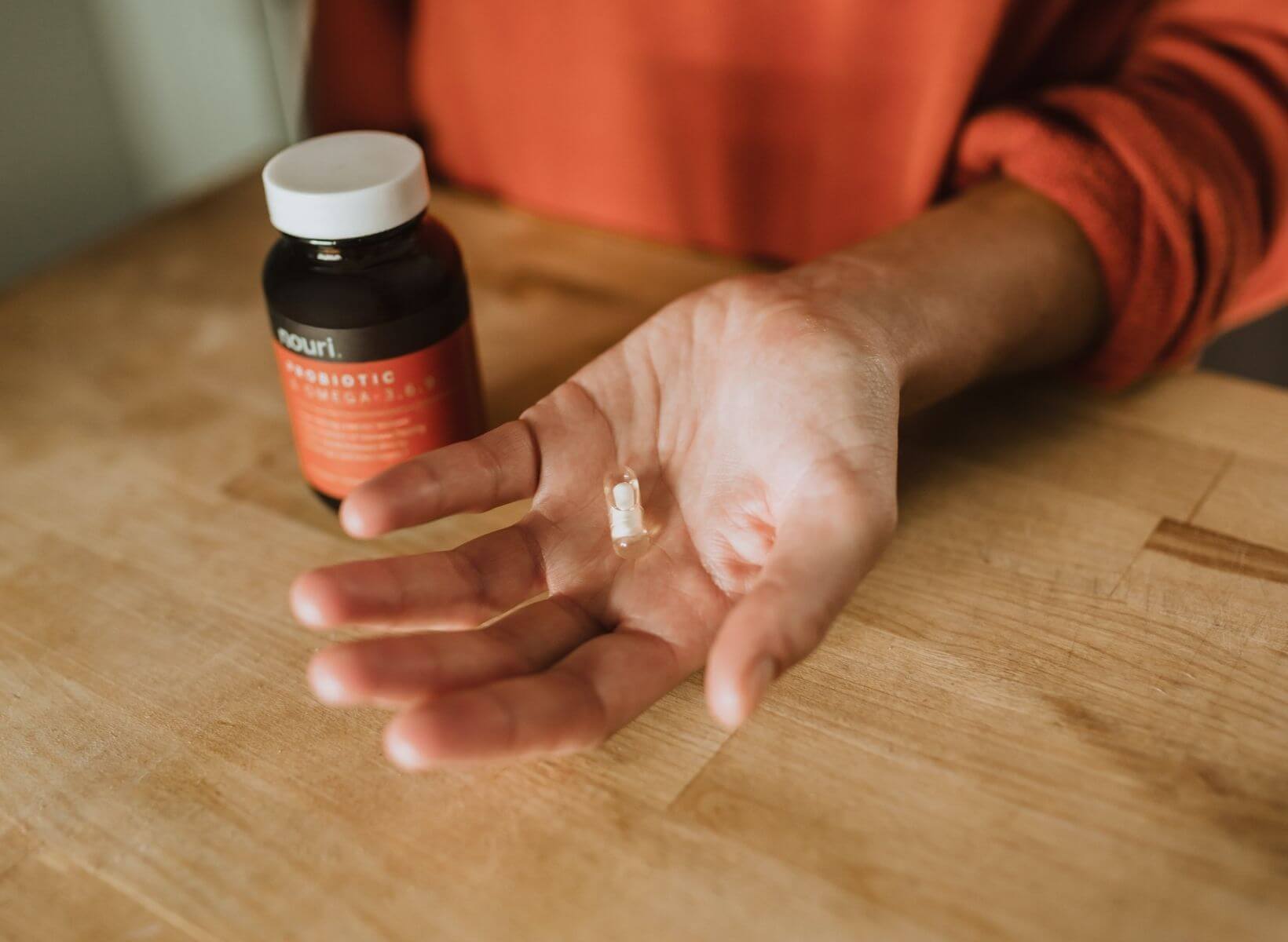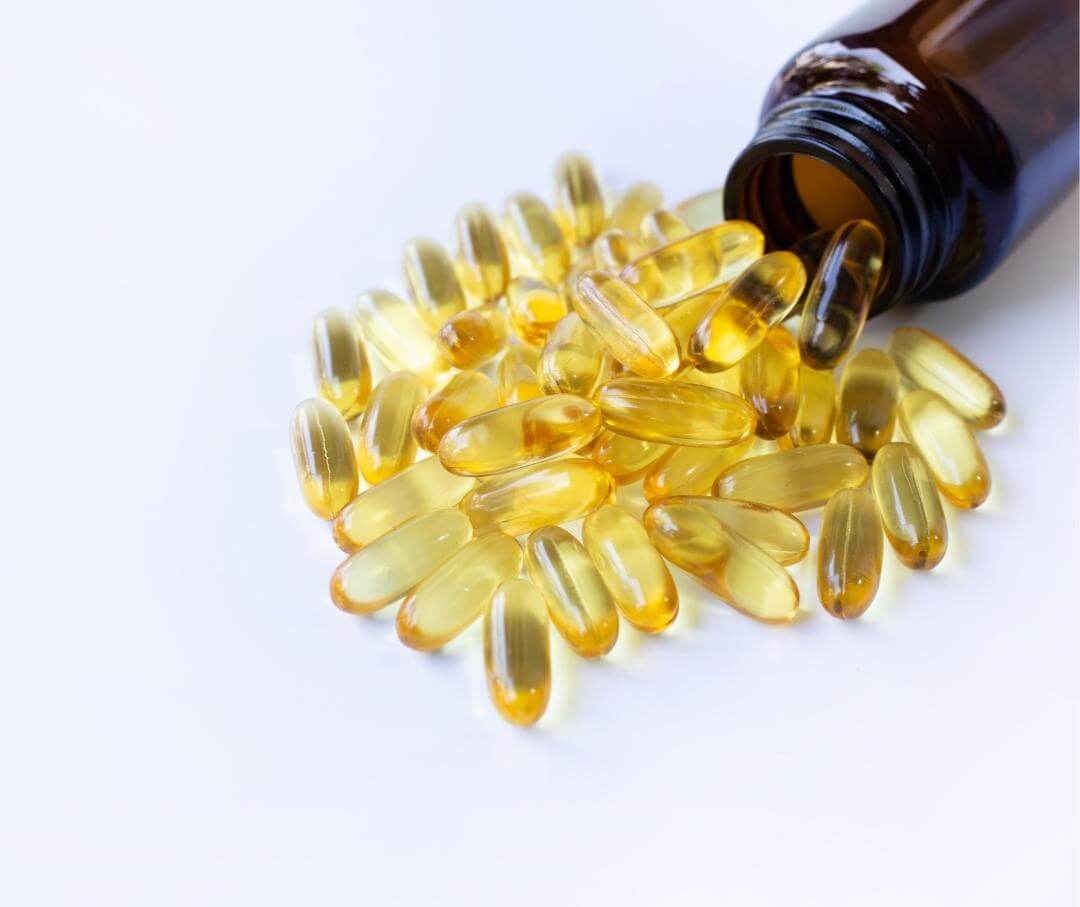Probiotics are microorganisms that live in your body and support your digestive and immune health—among other benefits.1 These tiny bacteria and yeasts are invisible to the naked eye, but if you took a microscope to a healthy gut, you would see a metropolis of busy microbes working to keep your body functioning as well as possible.
The scientific community has known about probiotics for over a hundred years, but popular interest in them has exploded within the last three decades due to demand for non-pharmaceutical treatment options, increased interest in microbes, and promising results from early small studies.2
Ongoing research is currently investigating the role of probiotics in heart disease, weight loss, digestive health, diabetes, insulin resistance, and blood sugar management. This article will take a look at what science has discovered so far about how probiotics can affect blood glucose.
<p class="pro-tip"><strong>Learn about </strong><a href="/blog/gut-health-and-weight-loss">the connection between gut health, blood sugar, and weight loss</a></p>
Using Probiotics to Control High Blood Sugar
In 2015 a team of researchers conducted a systematic review and analysis of seventeen different randomized, controlled trials studying the effect of probiotics on glycemic control.
They found that taking probiotic supplements may modestly improve glycemic control, and concluded that taking probiotics to modify gut microbiota may be a method for preventing or controlling high blood sugar levels.3
While more studies are needed, these results suggest that probiotic supplementation may modify the gut microbiota (the collection of all the microorganisms living in the digestive tract) and help control or prevent high blood sugar.
<p class="pro-tip"><strong>Learn about </strong><a href="/blog/benefits-stable-glucose">the benefits of stable blood sugar</a></p>
How Probiotics Can Affect Glucose Metabolism
A meta-analysis of randomized controlled trials published in 2016 looked at the effects of probiotics on glucose metabolism for individuals with type 2 diabetes. It found that taking probiotics reduced fasting glucose levels, and that this occurred in trials using multiple species of probiotics.
The researchers concluded that probiotic consumption may modestly improve glucose metabolism, and that taking multiple species for eight weeks or longer may enhance the effect.4
Probiotics and Fasting Insulin Levels
Another meta-analysis published in 2017 reviewed the data from 684 participants across 12 studies. The findings consistently indicated that probiotics can lower both HbA1c (a three-month average marker for blood sugars) as well as fasting insulin levels.5
The key is in the liver. Dr. David Cohen and his team at Cornell University unlocked this secret in 2020 after conducting their own animal studies and examining the link between probiotics and glycemic control. They discovered at least one molecule produced by gut microbes that control how the liver releases glucose into the bloodstream.6

Probiotics and Insulin Resistance
A 2017 study published in the Medical journal of the Islamic Republic of Iran looked at the effects of probiotic supplementation over eight weeks on groups of rats with or without Alzheimer's disease (insulin signaling is impaired in the brains of individuals with AD).7
The study found that regular consumption of four probiotic species of Lactobacillus and Bifidobacterium was effective in controlling glycemic status. Insulin resistance markers including serum insulin levels decreased in the rats given probiotics, but not in the control group.8
These findings suggest probiotics can play a role in improving insulin resistance, though larger studies involving human subjects are called for.
<p class="pro-tip"><strong>Learn about </strong><a href="/blog/insulin-resistance-vs-prediabetes">insulin resistance vs pre diabetes</a></p>
Can Probiotics and Prebiotics Be Used to Treat Prediabetes?
In 2021, Frontiers in Public Health published a systematic review of randomized controlled trials that studied the use of probiotics, prebiotics and synbiotics (a mix of probiotics and prebiotics) to treat prediabetes.
Their findings confirmed that probiotics can lower HbA1c, and can potentially improve glucose levels after eating. Prebiotics, on the other hand, didn't help with glycemic control, though they did alter the gut microbiota.
The review concluded that the benefits of using synbiotics to treat prediabetes were "partially demonstrated," but there wasn't evidence of significant improvement in glucose metabolism, lipid metabolism (fat burning) or body composition in the study participants.9
{{mid-cta}}
Can Probiotic Supplements Help Manage Blood Sugar?
There is not enough evidence to say taking probiotic supplements will provide a significant reduction in blood sugar levels, but emerging research appears promising.
In 2020 a preliminary randomized study observed the change in HbA1c values in healthy individuals at the start and end of a 90-day period.10 Within that time the intervention group received a probiotic called Lactobacillus Rhamnosus GG and the placebo group received nothing.
The blood test results showed the placebo group had an increase in HbA1c values, while the intervention group who had been taking the probiotic had no change. Study participants were not given lifestyle factors to control during the duration of intervention because it was a preliminary study.
There needs to be more in-depth testing to confirm these findings, but for now, researchers suspect that a probiotic supplement can help maintain stable blood sugar levels.
<p class="pro-tip"><strong>Learn more about </strong> <a href="/blog/probiotics-metabolic-health">probiotics and metabolic health</a>.</p>
Why Are Some Probiotic Supplements Refrigerated?
All probiotic supplements contain live strains of bacteria, and some of them need to be refrigerated to survive outside of the human body. Certain brands have capsules that are fine at room temperature, but they will vary depending on the supplement formula.
Both options are recommended. Remember to pick a strain that aligns with your health goals and that will be in the easiest form for you to take. See our guide to probiotic strains here. Popular options on the market include chewable tablets, drop form, or swallowing capsules.
<p class="pro-tip"><strong>Learn about </strong><a href="/blog/probiotics-weight-loss">choosing probiotics for weight loss</a></p>
Are There Risks to Probiotic Supplements?
Some people are medically advised to avoid using all types of probiotic supplements:
- Anyone who is immunocompromised should not consume any product with live microorganisms
- People with short bowel syndrome
- People currently receiving cancer treatments
Follow up with your doctor if you’re on medication or have questions about the safety of taking probiotic supplements. They will know your medical history and any potential risk factors that would contraindicate starting a probiotic supplement.

Can Natural Sources of Probiotics Lower Blood Sugar?
Probiotics are naturally found in a variety of fermented foods. However, scientists are not clear if probiotic-rich foods offer the same benefits as a probiotic supplement.11
The question is whether or not the concentration of probiotics in the food is potent enough to have an impact on your health. A probiotic supplement typically contains billions of bacteria, but a food source contains far fewer (typically in the millions).
There are a wide range of yogurts on the market today, including brands marketed as functional probiotic yogurts. The generally accepted minimum number of probiotic strains to be considered functional is 106 cfu/mL (one million colony forming units per milliliter) surviving in cold storage for up to 30 days.12
In the United States, in order for yogurt to bear the label “contains live and active cultures,” the FDA requires 107 cfu/g (ten million colony forming units per gram) at the time of manufacture, with the expectation of 10^6 cfu/g through the product's shelf life.13
Aside from the quantity of microbiota in probiotic-rich foods, they’re still good foods to include in your diet because they are rich in essential vitamins and minerals.
Examples of healthy probiotic foods include:
- Yogurt
- Kefir
- Sauerkraut
- Kimchi
- Kombucha
- Miso
- Pickles
Be sure to check labels for sugar content! Choose unflavored yogurt and kefir to reduce sugar intake (you can add low-glycemic fruits for a flavor and fiber boost).
Pickles are a great source of healthy bacteria but often very high in salt, so it’s best to choose a low-sodium, low-sugar version.
How Often to Eat Probiotic Foods
To reap the health benefits, you should include probiotic foods in your diet as regularly as possible, even daily. Each fermented food offers a different nutrition profile, so they should be rotated so you can benefit from a variety of nutrients and probiotics.
How to Track the Effects of Probiotics on Blood Glucose Levels
A continuous glucose monitor (CGM) device can provide ongoing data on your blood sugars. It is the perfect tool to assess if probiotics are making an impact on your glucose levels.
Try to be as scientific as possible when making changes to your diet. Introduce fermented foods one at a time to assess the true impact they may have on your blood glucose. It will likely take time for any significant effects and patterns to emerge.
The studies completed on the probiotic supplement Lactobacillus Rhamnosus GG tested the blood glucose values of participants three months after consistently taking the supplement.14 Based on their results, it’s safe to assume it will also take a few months of consistent probiotic use before you see any significant, lasting changes in blood glucose levels. Keep your probiotic intake as regular as possible, and review trends within your CGM data daily and over time.
It is not recommended to rely exclusively on probiotics to manage your blood sugars. You should consider them one tool to use as part of your overall health strategy. Continue to eat balanced meals, exercise regularly, and stay hydrated.
- Item 1
- Item 2
- item 3
Topics discussed in this article:
References
- National Institute of Health. (2019, August). Probiotics: What You Need To Know. NCCIH. Retrieved June 2022, from https://www.nccih.nih.gov/health/probiotics-what-you-need-to-know
- Puebla-Barragan, S., & Reid, G. (2019). Forty-five-year evolution of probiotic therapy. Microbial cell (Graz, Austria), 6(4), 184–196. https://doi.org/10.15698/mic2019.04.673
- Ruan, Y., Sun, J., He, J., Chen, F., Chen, R., & Chen, H. (2015). Effect of Probiotics on Glycemic Control: A Systematic Review and Meta-Analysis of Randomized, Controlled Trials. PloS one, 10(7), e0132121. https://doi.org/10.1371/journal.pone.0132121
- Zhang, Q., Wu, Y., & Fei, X. (2014) Effect of probiotics on glucose metabolism in patients with type 2 diabetes mellitus: A meta-analysis of randomized controlled trials. Medicina, 2016, 52(1), 28-34. https://doi.org/10.1016/j.medici.2015.11.008
- Yao, K., Zeng, L., He, Q., Wang, W., Lei, J., & Zou, X. (2017). Effect of Probiotics on Glucose and Lipid Metabolism in Type 2 Diabetes Mellitus: A Meta-Analysis of 12 Randomized Controlled Trials. Medical science monitor : international medical journal of experimental and clinical research, 23, 3044–3053. https://doi.org/10.12659/msm.902600
- Weill Cornell Medecine. (2020, February). Gut Microbiome Controls Blood Glucose Levels Through the Liver. WCM Newsroom. Retrieved June 2022, from https://news.weill.cornell.edu/news/2020/02/gut-microbiome-controls-blood-glucose-levels-through-the-liver
- Ferreira, L., Fernandes, C. S., Vieira, M., & De Felice, F. G. (2018). Insulin Resistance in Alzheimer's Disease. Frontiers in neuroscience, 12, 830. https://doi.org/10.3389/fnins.2018.00830
- Athari Nik Azm, S., Djazayeri, A., Safa, M., Azami, K., Djalali, M., Sharifzadeh, M., & Vafa, M. (2017). Probiotics improve insulin resistance status in an experimental model of Alzheimer's disease. Medical journal of the Islamic Republic of Iran, 31, 103. https://doi.org/10.14196/mjiri.31.103
- Wang, X., Yang, J., Qiu, X., Wen, Q., Liu, M., Zhou, D., and Chen, Q. (2021) Probiotics, Pre-biotics and Synbiotics in the Treatment of Pre-diabetes: A Systematic Review of Randomized Controlled Trials. Frontiers in Public Health, 2021(9), https://doi.org/10.3389/fpubh.2021.645035
- Sanborn, V. E., Azcarate-Peril, M. A., & Gunstad, J. (2020). Lactobacillus rhamnosus GG and HbA1c in middle age and older adults without type 2 diabetes mellitus: A preliminary randomized study. Diabetes & metabolic syndrome, 14(5), 907–909. https://doi.org/10.1016/j.dsx.2020.05.034
- Castellone, V., Bancalari, E., Rubert, J., Gatti, M., Neviani, E., & Bottari, B. (2021). Eating Fermented: Health Benefits of LAB-Fermented Foods. Foods, 10(11), 2639. https://doi.org/10.3390/foods10112639
- Nyanzi, R., Jooste, P.J., Buys, E.M. (2021) Invited review: Probiotic yogurt quality criteria, regulatory framework, clinical evidence, and analytical aspects. Journal of Dairy Science, 104(1), 1-19. https://doi.org/10.3168/jds.2020-19116
- U.S. Food & Drug Administration. (2022) CFR - Code of Federal Regulations Title 21, Part 131 - Milk and Cream - Subpart B - Requirements for Specific Standardized Milk and Cream, Sec. 131.200 Yogurt. Retrieved June 15, 2022, from: https://www.accessdata.fda.gov/scripts/cdrh/cfdocs/cfcfr/cfrsearch.cfm?fr=131.200
- Park, K. Y., Kim, B., & Hyun, C. K. (2015). Lactobacillus rhamnosus GG improves glucose tolerance through alleviating ER stress and suppressing macrophage activation in db/db mice. Journal of clinical biochemistry and nutrition, 56(3), 240–246. https://doi.org/10.3164/jcbn.14-116
































